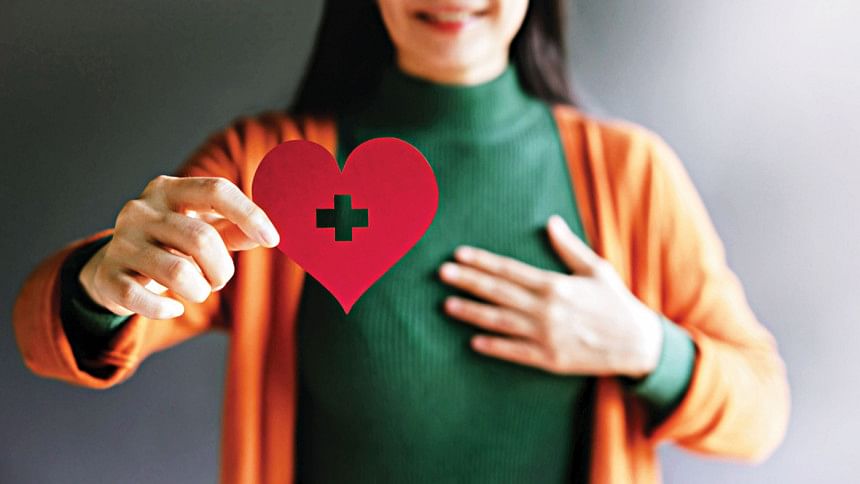Recognising heart attack symptoms in women

Heart attacks can present differently in women compared to men, leading to potential misdiagnoses and delays in treatment. Understanding these differences is crucial for timely intervention and better outcomes.
Women do not always exhibit the classic heart attack symptoms that are often associated with men, such as intense chest pain radiating down one arm. While these symptoms can still occur in women, many experience more subtle or even silent symptoms that can be easily overlooked. Here are six common heart attack symptoms in women that everyone should be aware of:
1. Chest pain or discomfort:
Chest pain is the most common symptom of a heart attack in both men and women. However, women may experience it differently. It might feel like squeezing, fullness, or pressure anywhere in the chest, not just on the left side. It as a vise tightening around the chest. It is essential to note that this discomfort is usually significant and uncomfortable during a heart attack.
2. Pain in the arm(s), back, neck, or jaw:
Women are more likely than men to experience pain in these areas. This pain can be confusing, as it might not be centred on the chest or left arm but instead appear in the back or jaw. The pain can be gradual or sudden, waxing and waning before becoming intense. Report any unusual or unexplained pain above the waist, as it could be a sign of a heart attack.
3. Stomach pain:
Heart attack-related stomach pain is often mistaken for heartburn, the flu, or a stomach ulcer. Some women describe this pain as severe abdominal pressure, akin to an elephant sitting on their stomach.
4. Shortness of breath, nausea, or lightheadedness:
Difficulty breathing without an apparent reason can be a warning sign of a heart attack, especially when accompanied by other symptoms. It can feel like running a marathon without moving. If you experience shortness of breath alongside other symptoms, it is crucial to seek medical attention immediately.
5. Sweating:
Women having a heart attack often break out in a cold sweat, which feels more stress-related than exercise-induced perspiration. Check out if you experience this type of sweating without a clear cause, such as heat or hot flashes.
6. Fatigue:
Extreme tiredness, even after minimal physical activity, is a common symptom among women experiencing a heart attack. Patients often report feeling an unusual tiredness in their chest, making simple activities like walking to the bathroom difficult.
It is important to recognise that not everyone will experience all these symptoms. However, if you have chest discomfort, especially if accompanied by one or more of the other signs, it is critical to visit emergency department immediately. Early recognition and treatment are key to improving survival rates and outcomes for heart attack patients. By being aware of these symptoms, women can take proactive steps to protect their heart health and seek prompt medical attention when necessary.

 For all latest news, follow The Daily Star's Google News channel.
For all latest news, follow The Daily Star's Google News channel. 



Comments